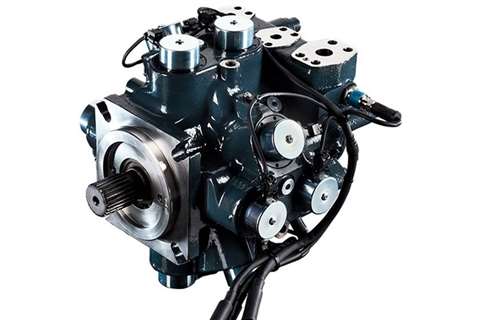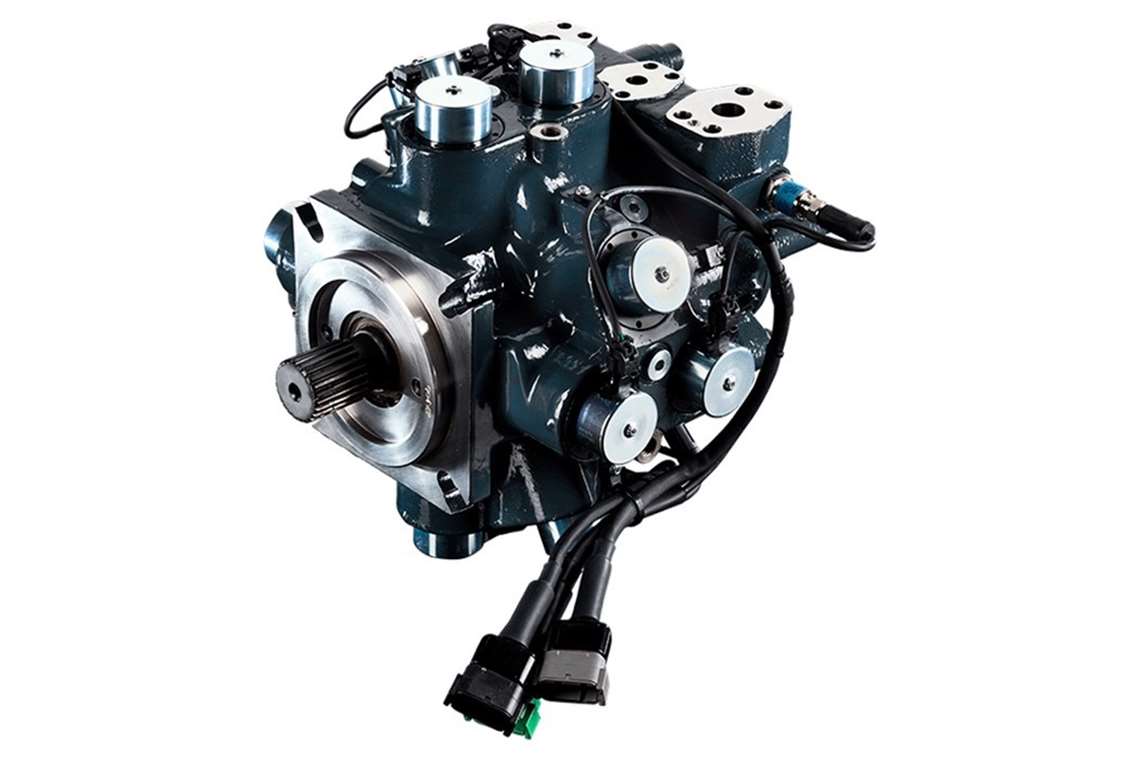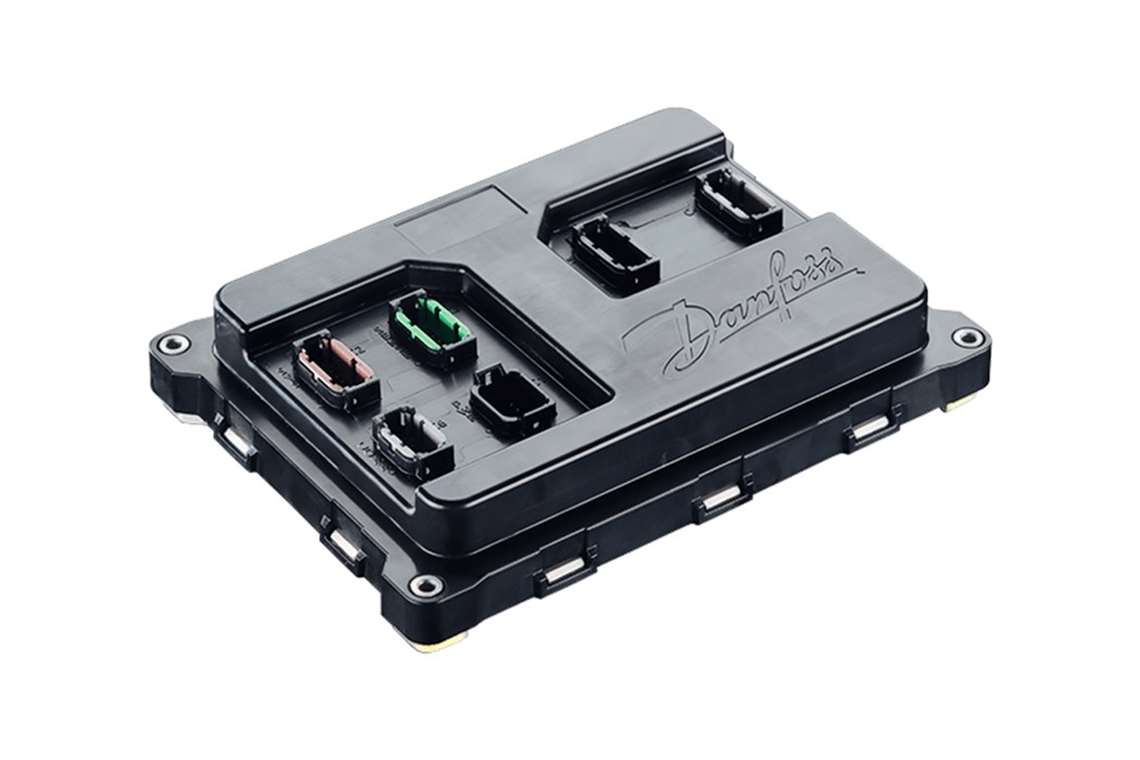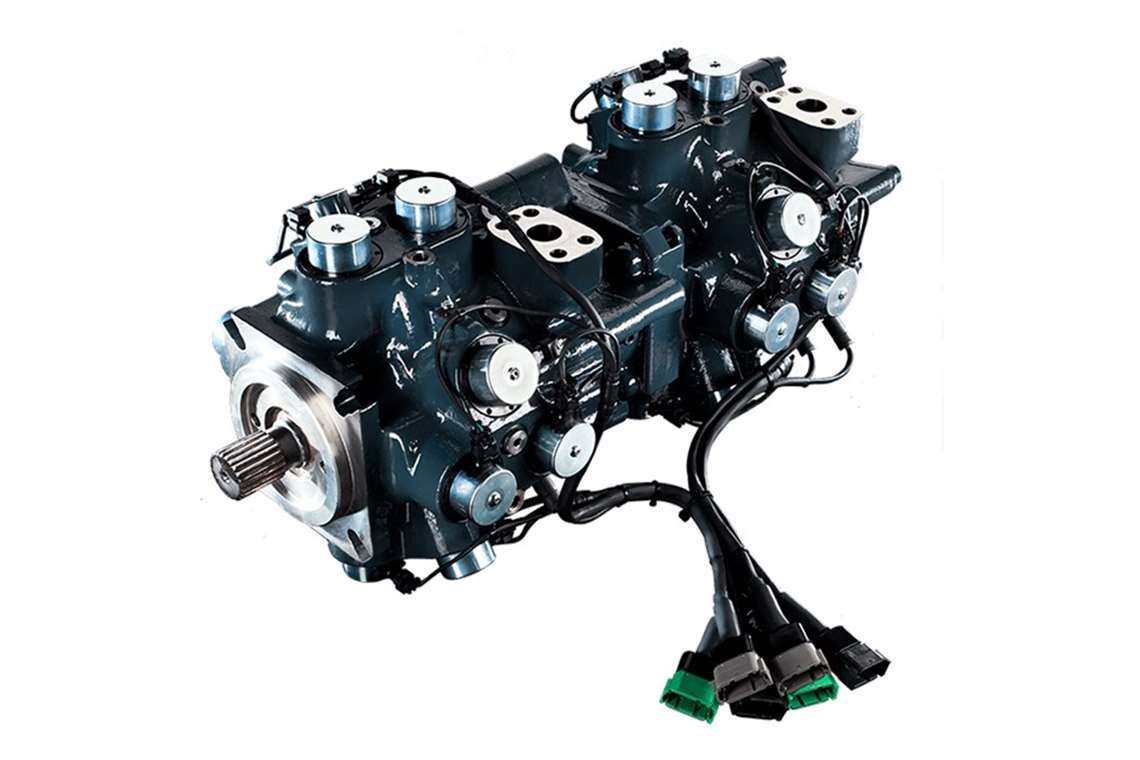
The Dawn Of Digital Displacement
22 January 2021
Danfoss launches first of Digital Displacement Pump line, more coming this year.
 Danfoss Power Solutions has launched the first of its Digital Displacement hydraulics products, the DDP096, a 92 cc/rev medium-duty radial piston pump.
Danfoss Power Solutions has launched the first of its Digital Displacement hydraulics products, the DDP096, a 92 cc/rev medium-duty radial piston pump.
By Mike Brezonick
While there have been changes and improvements in mobile hydraulic technology over the years, a lot of it has stayed the same. Even such advances as electrohydraulics were essentially a layering of electronic controls over pumps and motors still using basic designs that in some cases date back more than 100 years.
But now Danfoss Power Solutions, part of Denmark’s Danfoss Danfoss Group, is launching a new technology that the company said it nothing less than a “reboot of hydraulic power” with its Digital Displacement hydraulic pumps.
The new pumps, the first of which were launched late last year, are targeted toward a range of mobile and industrial hydraulic applications, and promise significant improvements in efficiency, productivity and responsiveness, the company said.
LONG DEVELOPMENT
Danfoss has been in development of its digital displacement technology for several years, an effort that was significantly enhanced by the company’s late 2018 acquisition of a majority share of Artemis Intelligent Power Ltd., an R&D and engineering company owned by Mitsubishi Heavy Industries (MHI). Artemis, now being operated as joint venture between Danfoss and MHI, is a specialist in digital displacement technology, which MHI had been using in wind turbine applications.
Danfoss recognized the potential for a more widespread use of the digital technology and now, just short of two years later, is bringing the first results to the world.
“Digital Displacement, as its currently coming to market, is coming as a very capable, very efficient, very productive high-power open circuit pump,” said Eric Bretey, director of the digital displacement program at Danfoss. “In the future, it will be capable of much more than that.
“For now, it brings some radically new and exciting capabilities to the world of high-power open circuit pumps. And it fits very well with the current portfolio of products we have in the portfolio at Danfoss Power Solutions, things like electrification products, steering controllers, controls and valves.”
THE LAUNCH SCHEDULE
The first of the new units is the DDP096, a single-outlet, medium-duty pump for mobile and industrial applications, which was launch in late 2020. Later this year,
Danfoss said it will release a three-outlet version, a tandem version with 192 cc/rev displacement and multiple controllable fluid outlets, as well as additional control modes.
 Key to the new Danfoss Digital Displacement pump is the DPC12 controller, which selectively enables each the pump’s pistons by actuating a corresponding on/off valve. The pump displacement is therefore digitally variable, resulting in fast and accurate flow control, Danfoss said.
Key to the new Danfoss Digital Displacement pump is the DPC12 controller, which selectively enables each the pump’s pistons by actuating a corresponding on/off valve. The pump displacement is therefore digitally variable, resulting in fast and accurate flow control, Danfoss said.
“There are some fundamental limitations to hydraulics today,” said Niall Caldwell, managing director of Artemis and the Digital Displacement program for Danfoss in Edinburgh. “One is limited energy efficiency. The second is the difficulty to control by computer what is basically a mechanical device. And together, these could be said to be limiting the potential of conventional hydraulic technology.
“This is a fundamental reboot of hydraulics for the 21st century. Instead of an axial format it’s a radial format and instead of controlling or and changing the swash angle, we’re enabling and disabling cylinders in real time, using computer-controlled valves. That gives us dramatically improved efficiency, multiple controllable outlets, which enables new system architectures and very fast digital control built in.”
The DDP096 has a radial piston pump design in which each of the pump’s piston chambers incorporate check valves at the inlet and outlet. The outlet check valve is passive, while the inlet valve is normally open and closed by a solenoid actuated by the Danfoss Digital Pump Controller (DPC12) electronic controller.
The pump has 12 pistons, spaced 30º apart, which each displace 8 cc of fluid per stroke to provide its total displacement volume of 96 cc/rev. There is no case drain port as the fluid volume within the pump body is connected to the inlet and any fluid that leaks out of the piston chamber is drawn back into the inlet.
As the pump’s input shaft rotates, it turns an eccentric cam which pushes the piston up and down in the piston chamber. The controller determines if the piston pumps fluid to the outlet. If the piston is turned off, the inlet check valve is not energized and the inlet check valve remains in the open position. The fluid displaced by the piston moves freely back and forth from the inlet. No fluid is discharged to the outlet.
To pump each piston, the controller closes the solenoid valve when the piston is at bottom dead center. The inlet check valve closes and the piston forces the fluid through the outlet check valve. When the piston reaches top dead center, the inlet check valve reopens and fluid is drawn from the inlet into the piston chamber as the piston moves out to begin another cycle.
The DPC12 controller selectively enables each piston by actuating a corresponding on/off valve. In this way, the pump displacement is digitally variable resulting in fast and accurate flow control, Danfoss said.
“The pump is very, very productive and it enables that productivity because it’s very, very, very fast,” said Bretey. “The response time from the time you give it an input to the time you start to see a change in the output can be 30 milliseconds. That unlocks machine productivity that most pumps simply can’t match.”
HIGH EFFICIENCY
Along with the response time, the Digital Displacement technology is significantly more efficient than conventional hydraulic pumps, Bretey said. “From about 25% displacement on up to 100%, you’ll see total efficiencies from this pump of 90% or greater, which is really exciting when you think about duty cycles a machine has. And because of the multi-port design, we can deliver flow at the right pressure for the consumer. We’re providing exactly what’s needed, this enabling higher system efficiencies that what could be done with standard pumps today.”
 Later this year, Danfoss will launch more products in its Digital Displacement range, including a tandem version with 192 cc/rev displacement and multiple controllable fluid outlets.
Later this year, Danfoss will launch more products in its Digital Displacement range, including a tandem version with 192 cc/rev displacement and multiple controllable fluid outlets.
Much of that efficiency is due to the DPC12 controller and its embedded software. “The controller is at the heart of these machines and what they can do for your systems,” Caldwell said. “This is a pump that is completely software controlled – every single thing that pump does is controlled by software that runs in the pump controller.”
Bretey added that “every few milliseconds, we’re evaluating what’s happening in the pump – what the commands are, what the output needs to be – and then making changes in what happens in the pump. The pump and controller are always working together and they can be controlled by your controller or our Plus+1 microcontroller.”
In its own machine testing, Danfoss said the DDP has demonstrated significant gains in productivity, efficiency and fuel economy. Examples include a hydraulic excavator that saw a 28% increase in productivity and 10% gain in fuel economy. “We’ve also had great results with forklift trucks,” Bretey said. “With customers, with customer data acquisition, we’ve seen fuel consumption reductions of 40% or greater in four-ton and larger forklift trucks.
“This reduction in fuel consumption means a much lower operating cost and we’ve sacrificed absolutely no productivity at all. In fact, in some cases it indicates you can do a significant engine downsizing.”
Finally, the Danfoss Digital Displacement Technology that will currently operate in systems based on internal combustion engines, will be equally effective in terms of electrification, the company believes, as the pumps have demonstrated in testing at Danfoss Editron, the company’s business unit dedicated to electrification.
“When we originally started,” Bretey said, “some people asked, is Digital Displacement going to compete with electrification? Actually, we believe that you put them together, they enable electrification.
“We believe that Danfoss has the only end-to-end solution for competing for taking electrical energy and converting it and hydraulic energy with this kind of efficiency. We’re very excited about bringing this to market and we want to see applications with all of our customers interested in electrification where we can put these two great products together and give you fantastic results.”
This story first appeared in the January issue of Diesel Progress. For a free subscription, click here.
STAY CONNECTED




Receive the information you need when you need it through our world-leading magazines, newsletters and daily briefings.
POWER SOURCING GUIDE
The trusted reference and buyer’s guide for 83 years
The original “desktop search engine,” guiding nearly 10,000 users in more than 90 countries it is the primary reference for specifications and details on all the components that go into engine systems.
Visit Now
CONNECT WITH THE TEAM









